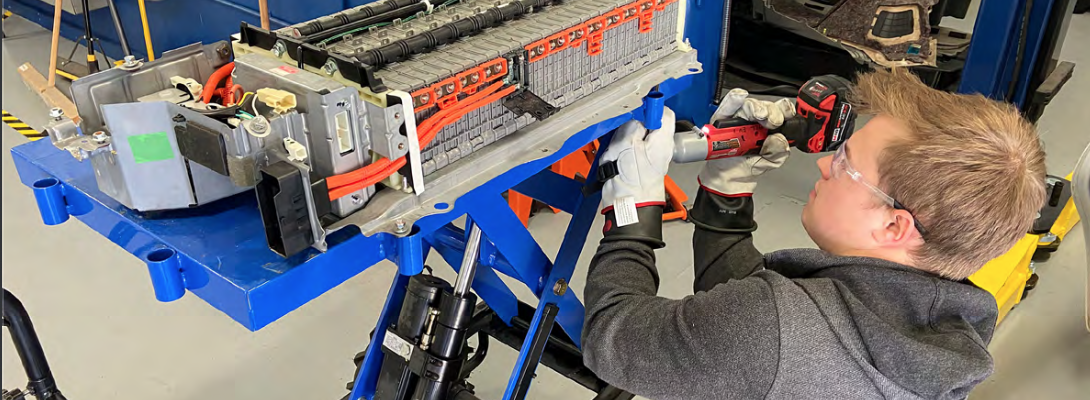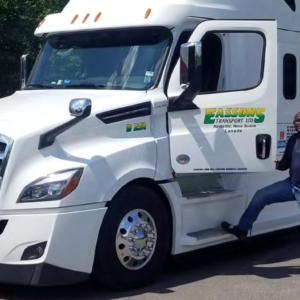Second life EV batteries
By David Giles
It’s been over two decades since the debut of both the Honda Insite and Toyota Prius in North America. Back when these cars were first introduced many questions surrounded the batteries.
Some of the concerns were longevity, cost and safety, with over 4.3 million Prius cars sold since 2000 in North America and many reaching well over 600,000 km on their original nickel metal hydride (NiMH) batteries. The question looms over End-Of-Life (EOL) or is there a possible second life for these cars? To further this number, Honda put over two million hybrid cars and then another two million plus hybrids from various manufacturers that have been sold in North America since 2000.
So the question is “what happens when a battery goes bad?” You only really have two options. Just like any other piece of battery-powered equipment, you can rebuild or replace.
These come with cost and then the environmental issues surrounding replacement and disposal. In most cases if a hybrid battery in a Prius goes bad, the customer has two options. Replace the entire battery or get rid of the car. The cost in replacing a Prius 2004 battery module assembly can set a customer back several thousands of dollars.
I have heard the cost can be between $5 – 10K dollars at a dealer. On a car that might only be worth four-or-five thousand with a good battery, so many cars are traded in and then sent to auctions or recyclers.
The real question is, is the car ready for the automotive graveyard? Owners become frustrated their beloved car is now at its end-of-life, but still looks great and has been very reliable for the last 10-plus years. To put thousands of dollars into their car could be a way of keeping it on the road, but the cost just does not make sense.

Now new generation electric vehicles (EVs), PHEV’s and BEV’s including Prius Prime use the lithium-ion battery technology. These batteries allow the electric vehicle to perform as well as an internal combustion engine (ICE) vehicle and get long range on a single charge.
These batteries also have a cycle life and cost that can be significantly higher than a NiMH battery.
Recent research shows that in many cases when a NiMH battery fails it’s not because all the cells in the battery fail. Only a couple of cells typically fail and cause limp mode with the vehicle or shutdown. It’s like putting one bad battery cell in with three other good battery cells into a flashlight. Replacing that one bad battery cell gives a second life back to the flashlight. Why can’t we do that with EV batteries? And the answer is yes!
Companies like ALL EV Canada, have been replacing individual cells in NiMH packs as a service/repair giving the owner of his-or-her older hybrid vehicle a second life and only costing a fraction of a new pack. The first step is to diagnose the bad cells then test and cycle the other cells to make sure the batteries that stay are balanced. The process has been so successful after finishing and testing the battery back into the car the battery gets an All EV Canada, one-year unlimited KM warranty on the battery module.
Peace of mind is what all vehicle owners want and knowing they now have that warranty will let them sustain enjoyment of their older hybrid vehicles.
Now, older lithium powered EV vehicles are starting to show lost range and in some cases vehicles that won’t even move. Older Nissan Leaf packs are starting to drastically lose range as an example. We have heard many times from customers that call us from across Canada, how they love their car but can’t afford to spend thousands on battery replacement.
So at ALL EV Canada we are committed to saving customers the cost of a total battery replacement in the vehicle. While this replacement of an entire pack would once again ensure extended life of the vehicle it’s the cost to the customer, then the environmental impact from the discarded pack that become an issue.
Dalhousie Renewable Energy Storage Lab (RESL) run By Dr Lukas Swan, is turning discarded and EOL packs into usable energy storage for wind, solar and tidal power. So, cells that are removed from a bad pack could be put to a power storage wall. This is because the energy in a cell that may not be useful for a vehicle would be still good for power storage.
ALL EV Canada is currently working on a couple of 2011 Leaf packs, identifying and replacing cells is part of our research. This research is sent to Dr Swan, and his engineering students from the RESL to develop a system that could be applied to other Lithium-ion batteries without replacing entire battery packs.
Sources predict that over 525,000 batteries will be hitting their EOL by 2025 and one million plus by 2030.
That means solutions for cell replacement or energy storage will become big business as it’s predicted EV sales will continue to soar.


